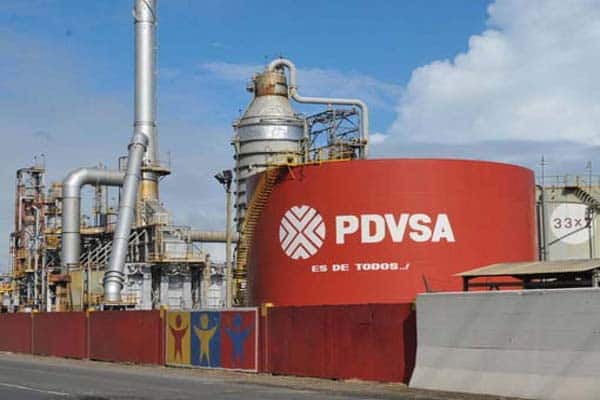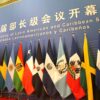
Venezuela has been severely hit by the collapse in oil prices since mid-2014. However, its oil output started to plummet well before. The country’s oil production peaked in 2008 at 3.24 million barrels per day (bpd). The latest OPEC data for May 2016 report a production of 2.37 million bpd, with a loss of almost one million bpd in less than a decade and over 400,000 bpd in the past two years. Moreover, despite having the world’s largest oil reserves, the decline in the domestic production of lighter crudes has forced the country to import light oil from other OPEC producers, such as Algeria and Angola, to be used as diluters of the extra-heavy crudes obtained in the Orinoco fields. In addition to the well-known knock-out effects on the country’s economy, the oil price crash and the chaos that is engulfing the national oil company PDVSA are eroding its role as an international oil player. Two recent episodes illustrate the discreet and declining charm of Venezuelan oil: the slashing of oil exports to Cuba and the renegotiation of Chinese loans-for-oil. These two hallmarks of Venezuela’s oil diplomacy inherited from the Hugo Chávez presidencies are now in serious jeopardy.
Venezuela sells its oil to Cuba under an oil-for-services scheme, with Cuba offering mainly health and education services (medical doctors and teachers, but also more opaque security support). The oil sold to Cuba is heavily subsidised, as only 60% of its price is paid for in the first 90 days, while the other 40% is financed at a significant discount (a 1% interest rate) over 25 years. Venezuelan crude oil exports to Cuba jumped from some 38,000 bpd in 2003 to over 100,000 bpd from 2008 onwards, under the Petrocaribe framework. Cuba has been the main beneficiary of Petrocaribe, aimed at gaining political support for Venezuela in Latin America by selling oil to its allies under advantageous terms. The collapse in both the oil price and PDVSA’s management has made this framework increasingly untenable and other countries, such as Jamaica, Curaçao, the Dominican Republic and Uruguay, have also reduced Venezuelan oil imports.
In the first half of 2016, Cuba has received 53,500 bpd of crude from PDVSA, a 40% drop from the first half of 2015, according to company data obtained by Reuters. While this has been partially offset by increased exports of refined products, overall crude and products shipments to Cuba still fell by 19.5% in the first half of the year. Furthermore, PDVSA has also changed the kind of crude being exported to Cuba. The need to preserve Venezuelan medium crude to dilute extra-heavy Orinoco oil has forced PDVSA to reduce lighter crude exports to Cuba and start supplying its ally with heavier oil, making the management of Cuban refineries more difficult and preventing the re-export of more lucrative light crudes and refined products (gasoline and jet fuel). This will make a significant source of hard currency vanish and might eventually turn Cuba to importing US oil, as some of its Petrocaribe partners have already done during the past months.
Chinese loans-for-oil have also reduced their appeal. A significant amount of the oil exported to China is due to pay loans-for-oil of over US$50,000 million agreed upon since 2007. The fall in oil prices has made it increasingly difficult for Venezuela to comply with the agreement’s terms, because it now has to devote more oil exports merely to service the debt. This has forced the Maduro government to ask China for a grace period to cancel the loans, limiting oil-for-loans deliveries to pay interest and asking cash for the remaining exports. According to Reuters, Venezuela has proposed that oil exports to China be devoted to paying interest only while Venezuelan crude oil remains below US$50 per barrel. Whenever the Venezuelan oil basket exceeds the US$50 threshold, it should allocate part of its oil exports to China to repay the loan (in addition to interest). For PDVSA this is a key goal, because the company is experiencing serious cash flow difficulties and needs to cancel some US$4,000 million debt before the end of 2016.
Negotiations continue surrounded by secrecy and are determining the fate of a new US$5,000 million Chinese loan for Venezuela. The outcome remains to be seen, but China seems increasingly concerned about Venezuelan oil policies and PDVSA’s inability to revert the decline in the country’s oil production. The threshold proposed by Venezuela does not look very promising for Chinese interests, especially considering the evolution of the Venezuelan oil-basket price. The average price for Venezuela’s mix of heavy and medium crude in the first half of 2016 was US$30.43, well below the 2015 average of US$44.65 an far lower than 2014’s US$88.42 and 2013’s US$98.08. Furthermore, China has insisted, as it has done in the past in other re-negotiations, that the agreement be ratified by the Venezuelan Parliament. This risks being too bitter a pill to swallow for the Maduro government, which lost its parliamentary majority in the December 2015 legislative elections. It will also expose Chinese loans-for-oil to greater political scrutiny, eroding the second pillar of the Chavez oil diplomacy legacy.


